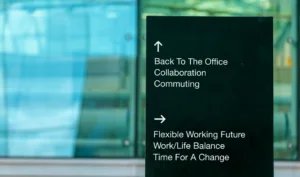
How to Grow the Soft Skills Your Team Needs to Collaborate
Building rapport, goodwill, and respect among all team members is essential for the best collaborative sessions. How do you do that? “Transparency, openness, and a

Building rapport, goodwill, and respect among all team members is essential for the best collaborative sessions. How do you do that? “Transparency, openness, and a

Organizational culture is often seen as an abstract concept. However, I have found that network science offers a powerful lens to better understand and shape

One day on a trip to our local secondhand store, I stumbled upon two great finds. First, a 1983 version of Miss Manners’ Guide to

Modern organizations depend on people to work effectively within teams. Arguably, teamwork is even more important now, as businesses navigate diverse challenges, from constant technology

In the fast-paced realm of modern work, where remote and hybrid setups reign supreme, the intricacies of collaboration have taken on a whole new meaning.

Artificial intelligence. Some leaders love it. Some have accepted it. Others still have serious questions about it. But whatever your opinion may be, there is

Imagine this: You’re attending one of your company’s senior staff meetings. The CEO nods and smiles when one executive shares a KPI chart with an

In recent years, digital transformation has been one of the hottest topics in leadership circles. Technology is central to this kind of complex, large-scale endeavor.

Over the years, worktech solutions of all types have repeatedly promised to transform the workplace. Still, employers aren’t so sure. In fact, it can feel

Management advice is everywhere. But how do you know which guidance to trust? To find truly useful answers, we asked business executives to answer this

No question about it. Strong internal communication is critical to a strong business. But it’s not easy — especially when workplace dynamics are constantly fluctuating.

Change is an integral aspect of every organization — especially in today’s volatile environment. But managing change is challenging. That’s why it sometimes helps to

Why Focus on Psychological Safety? Successful organizations create conditions that help team members perform effectively, solve complex problems in innovative ways, and feel a sense

For most of the last three years, millions of people clocked in at work from the comfort of home. Now, eager to return to a

At what point in a career does learning stop? Hopefully, never! Most business and technical professionals realize that becoming proficient in a job and becoming

“Absence makes the heart grow fonder.” No doubt, you’ve heard this familiar quote. You may even have said it to encourage others who are separated

Running a business from home can be an exhilarating and highly rewarding experience. But remote business owners know that leading from a home office also

We don’t need research to tell us the future of work will be much different from pre-pandemic norms. But Covid isn’t the cause. Disruption was

When the pandemic suddenly forced millions of people to work remotely, employers weren’t sure what to do next. Because the transition was nearly instantaneous, this

As 2022 draws to a close, most organizations are deeply involved in planning, budgeting and forecasting for the coming year. To complete this rigorous process,

Have you noticed that workforce engagement and motivation are slipping? You’re not the only one. In April, Gallup confirmed that U.S. workforce engagement declined from

Are you looking for proven ways to drive employee engagement? Many organizations find that collaboration is a highly effective strategy. For instance, consider these 10

Sponsored by: ThoughtExchange For several months, we’ve been sharing insights from our partner ThoughtExchange. They’ve done some fascinating research on Gen Z employees, employee experience,

What is a great “place” to work today? With many abandoning the office tower or business park cubicle office, we’re increasingly emerging from an era

For many of us, virtual meetings have become the lifeblood of remote working communication. COVID-19 has made face-to-face meetings the exception rather than the rule.